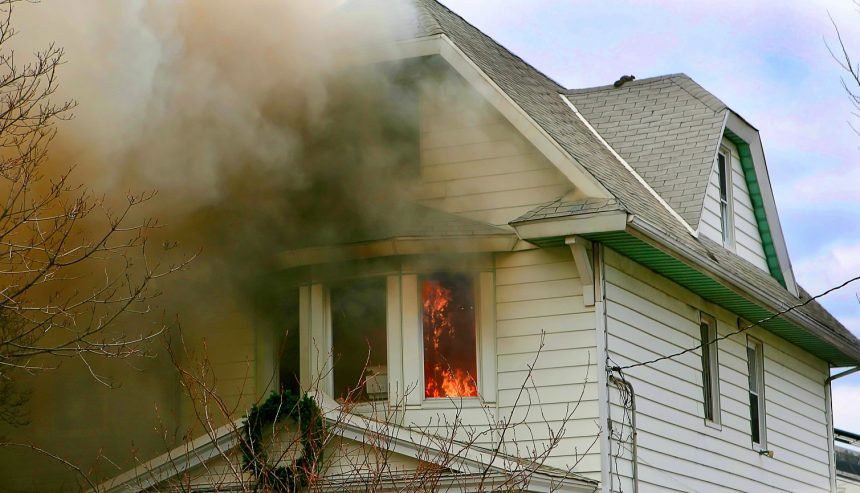Fire damage leaves more than charred walls and smoke stains. The Fire Damage restoration process involves structured phases designed to return a property to safe, functional, and habitable condition. From the first inspection to the last coat of paint, professionals follow industry standards to ensure nothing is overlooked. For property owners, knowing these phases provides clarity during recovery and helps set expectations for the timeline, scope, and outcome of restoration work.
The First Phase: Initial Assessment and Safety Evaluation
The restoration process begins with a detailed assessment of fire damage. This phase identifies structural risks, safety hazards, and the full scope of loss.
Inspecting Structural Integrity
Professionals evaluate foundations, walls, and load-bearing elements to confirm whether they are stable or require reinforcement. Fire often compromises hidden areas, making early detection critical.
Documenting Damage for Claims
Thorough documentation with photos, reports, and material listings ensures insurance claims reflect the true scope of loss. This phase provides a clear roadmap for the restoration plan.
The Second Phase: Securing and Stabilizing the Property
Once risks are identified, the property must be stabilized to prevent further damage.
Board-Up and Tarping
Broken windows and exposed roofs are sealed to protect against weather and intrusion. Tarping also prevents additional water intrusion from rain or firefighting efforts.
Structural Support
If framing, roofing, or flooring is weakened, temporary supports are installed to keep the property safe until full repairs are made.

The Third Phase: Smoke, Soot, and Debris Removal
Smoke and soot spread far beyond the visible burn area, requiring specialized cleaning methods.
Cleaning and Neutralizing Smoke Residue
Chemical sponges, thermal fogging, and ozone treatment neutralize odors and remove microscopic soot particles. This prevents long-term air quality issues.
Debris and Hazard Removal
Burnt materials, melted plastics, are removed. Clearing out hazardous debris allows safe access for repair crews.
The Fourth Phase: Structural Drying and Decontamination
Firefighting water often leaves significant moisture inside the property. This phase ensures the building is dry and sanitized.
Water Extraction and Drying
Air movers, dehumidifiers, and thermal imaging are used to remove hidden moisture. This step prevents mold growth and further structural decay.
Sanitization of Surfaces
All affected surfaces are cleaned with antimicrobial treatments to eliminate bacteria and toxins left by smoke and firefighting chemicals.

The Fifth Phase: Contents Cleaning and Restoration
Personal belongings and business equipment can often be restored instead of replaced.
Salvaging Belongings
Documents, furniture, and electronics may be cleaned using ultrasonic or freeze-drying methods. This reduces the emotional and financial impact of the fire.
Distinguishing Restorable vs. Non-Restorable Items
Professionals categorize contents based on safety, functionality, and restoration potential. Items that cannot be safely salvaged are documented for replacement.
The Sixth Phase: Structural Repair and Reconstruction
After cleaning and drying, the focus shifts to rebuilding the property to pre-loss condition.
Rebuilding Walls, Floors, and Roofs
Damaged framing, drywall, and roofing materials are replaced. Construction is guided by local building codes to ensure long-term safety.
Restoring Mechanical Systems
Electrical wiring, plumbing, and HVAC systems are inspected, repaired, or replaced as necessary. These systems must be fully functional before final inspections.
Comparing Fire Restoration in Residential vs. Commercial Properties
The restoration phases apply to all properties, but scale and complexity differ.

The Final Phase: Finishing Touches and Verification
The last stage of fire damage restoration ensures the property is safe, functional, and livable.
Aesthetic Restoration
Painting, flooring, and finishing work restore the property’s appearance. The goal is to remove any visible reminder of the fire.
Final Inspections and Safety Checks
Air quality, structural soundness, and mechanical systems are verified. Documentation confirms the property is ready for reoccupation.
Common Question: How Long Does Fire Damage Restoration Take?
The duration depends on the severity of the fire, the size of the property, and the extent of structural and content damage. Small residential fires may take several weeks, while large commercial losses may require months. The phased approach ensures that no step is rushed, prioritizing both safety and long-term stability.
Conclusion
Fire damage restoration follows a structured sequence of phases designed to return properties to safe and functional condition. From the first assessment through reconstruction, each stage addresses a specific aspect of recovery: safety, cleaning, drying, salvaging, and rebuilding. This process not only restores structures but also reassures property owners that all hidden risks have been addressed. By understanding these phases, homeowners and business managers gain clarity on what to expect during recovery. Fire restoration is more than repair—it is a systematic process of rebuilding safety, functionality, and peace of mind.
Visit us: https://maps.app.goo.gl/XUX7YXhZpRqJyHgg6
FAQs
What is the first step after a fire in property restoration? The process begins with an assessment of structural safety and documentation of damage. This sets the foundation for restoration planning and insurance claims.
Can smoke odors be fully removed during restoration? Yes. Advanced techniques such as ozone treatment and thermal fogging neutralize smoke odors at the molecular level, ensuring clean indoor air.
Is water damage always present after a fire? Often, yes. Water from firefighting efforts saturates structures, requiring drying and dehumidification to prevent mold and decay.
Are personal belongings always replaced after fire damage? Not always. Many items can be salvaged through specialized cleaning methods such as ultrasonic cleaning or freeze-drying.
Why does commercial fire restoration take longer than residential? Commercial properties have larger footprints, more complex systems, and stricter code requirements, which extend the restoration timeline compared to homes.
Reviewer: Matthew Moore brings over 15 years of experience in residential renovation marketing. The review provided helped shape this content to better connect with homeowners seeking reliable, high-quality restoration and home improvement services.